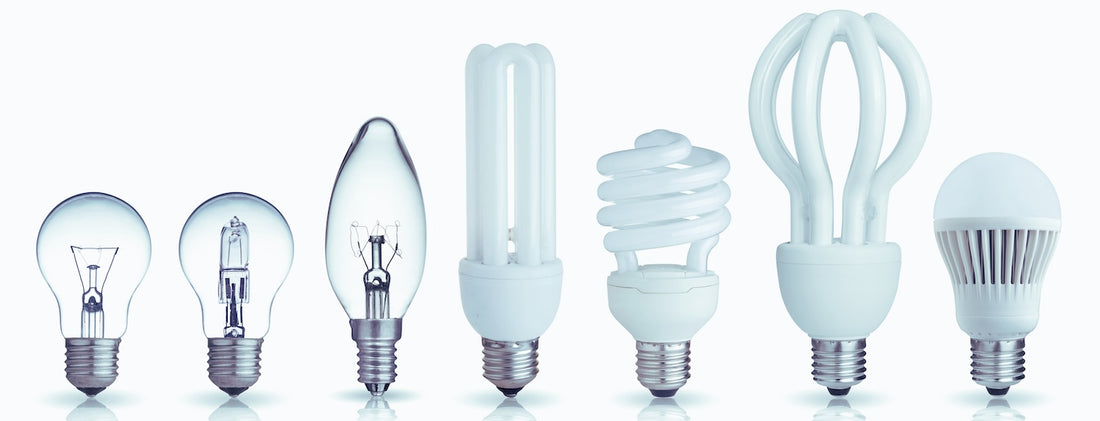Growing indoors is great fun but before you jump in and just buy any old light on eBay, read this informative post as it could save you a lot of money and drama going forward.
First things first, if it is cheap, it is more than likely not that good in terms of horticultural output.
Colour output is important to supply the plants with the correct spectrum for the most optimal growth and plant development
If you are unfamiliar with how horticultural lighting systems and plants work, we recommend you have a read of our tutorial on light output first before continuing.
Below are the main types of horticultural lighting:
HID (High Intense Discharge) is a type of electrical gas-discharge lamps and come in a variety of wattages and spectrums. HPS, MH and CMH lights are types of HID lights.
HPS (High Pressure Sodium) are predominantly used in the transitioning & flowering phase of the plants life, the spectrum output is usually between 2000-3000K (Kelvins) which we see as a yellow, orange colour. These lamps are popular for their strong source of red light which is extremely effective for plant growth.
MH (Metal Halide) Used mainly for the vegetative phase as this type of lamp is better for vegetative growth, the spectrum is between 6000-6500K which we see as a blue, white colour. These lamps are slowly becoming less popular as evidence starts to show that less blue light and more red light is more optimal for plant growth.
CMH (Ceramic Metal Halide) These lamps are becoming increasingly popular and slowly taking over the HPS market as these HID lamps offer a full spectrum light output that is the closest to that of the Sun out of all the HID lamps on the market. These particular lamps also run at a lower wattage, saving power and offering a better, full spectrum output, becoming the answer for most HID growers. CMH are generally the only HID lamps that offer a true full spectrum output.
Propagation lighting (T5, CFL, LED) are the types of lights used to propagate cuttings and germinate seedlings, they are significantly lower in PPF output, meaning these lights are great for the first 1-4 weeks, it is at this point the plant would transition to a more powerful light.
T5 (Fluorescent battens) T5 lighting is used to germinate seeds or propagate our cuttings, it is a fantastic light to raise your seedlings before transitioning them to something with a little more intensity, 6500K white/blue light for growth.
CFL (Compact fluorescent lamp) Similar to T5 lighting, used for the same reasons they also use much less power than competing T5. These lights are great for cuttings or seedlings, most growers use for about 2-4 weeks before needing to transition.
Full spectrum lighting are fairly new as far as lighting technologies go, they are by far superior to any other light system, the increases in oil production and end yield are quite astounding. As these types of lights are expensive in comparison, most of indoor gardeners use a blend of HID and full spectrum to reduce power and increase yield. Eventually every light will follow this technology as the current scientific evidence is irrefutable.
LED (Light Emitting Diode) lighting system are quickly becoming the best choice of horticultural lighting as the technology can offer far more than any other light source in existence. LED systems can offer full spectrum outputs, precise mono colour diodes for custom spectrums and extremely powerful PPF outputs that can far exceed that of any other type of figure at the lowest possible energy requirements, making LED the most efficient and effective lighting source possible of horticultural lighting.
LED systems also have the major benefit of up to a decade of consistent use with only 5-10% degradation of the light output, compared to HID lamps which are often changed out yearly for new lamps as they lose a significant amount of light output with usage over time.
Summary:
While there is many viable forms of horticultural lights available on the market that will grow healthy, massive fruiting or flowering plants, the best type of lighting systems and the future for horticulture is LED by a large margin. The only real current downside to LED lighting systems is the price point, as the technology is still emerging into the mainstream of grow lights, and on that note, avoid buying any cheap eBay/online LED lights that are usually purple in light output. As the saying goes: 'You get what you paid for' rings true time and time again.
Photoperiods:
A photoperiod is the amount of light a plant receives in the day and how much darkness it receives at night, please refer to the *lighting blog if you still do not understand this.
- 24 on 0 off (Usually most propagation rooms are powered non-stop)
- 18 on 6 off (Most commonly used in vegetative phase)
- 12 on 12 off (Used to initiate the flowering response)
- 12 on 5.5 off 1 on 5.5 off (This is called Gas Lantern Routine, and should only be done from the start, so never transition to this photoperiod while using traditional hours)




